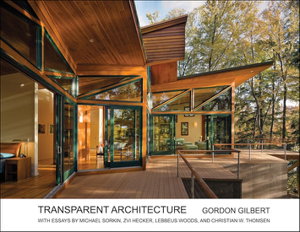
PublishedOro Editions, June 2017 |
ISBN9781939621450 |
FormatSoftcover, 112 pages |
Dimensions19.7cm × 15.2cm |
First used in the 15th century, the word transparent has origins in the Medieval Latin - transparere, meaning to show through. Its original Latin derivation is trans + parere, meaning to show oneself. The projects in this book point to an architecture that seemingly suggests a multiplicity of qualities.
Paradoxically, it is also an architecture that reveals itself and its own singular nature clearly. The structures themselves display their own material and organisational logic, yet they are also able to function as containers for thought, moods, and memories. The inhabitant then moves through and interacts, in a live and changing world. Activities happen all at once, in a seamless whole, in a simultaneity of experience. This is an architecture of natural processes in the revealed landscape, entropic and vital, where the normal boundaries and usual edges do not hold. The experimental drawings, texts, and built projects in 'Transparent Architecture' are visual and spatial explorations. They aim toward architecture that provokes thought, refines one's abilities to see, and embraces the ongoing confluence and mutability of things. AUTHOR: Gordon Gilbert was born in Washington DC and raised in Latin America. He has degrees in Architecture and Art History from the University of Miami, and established his own architectural office, Gordon Gilbert Architect, in New York City in 1984. He was a founding member of the Research Institute for Experimental Architecture, and has developed conceptual and experimental work over many years, including such projects as "Architecture of the Night," published and exhibited internationally. He is a past fellow in architecture at the New York Foundation for the Arts, and at the MacDowell Colony in Peterborough, New Hampshire. His office has designed sets and portable objects for productions by New York City dance companies, and has completed numerous design and construction projects nationwide. 100 colour

